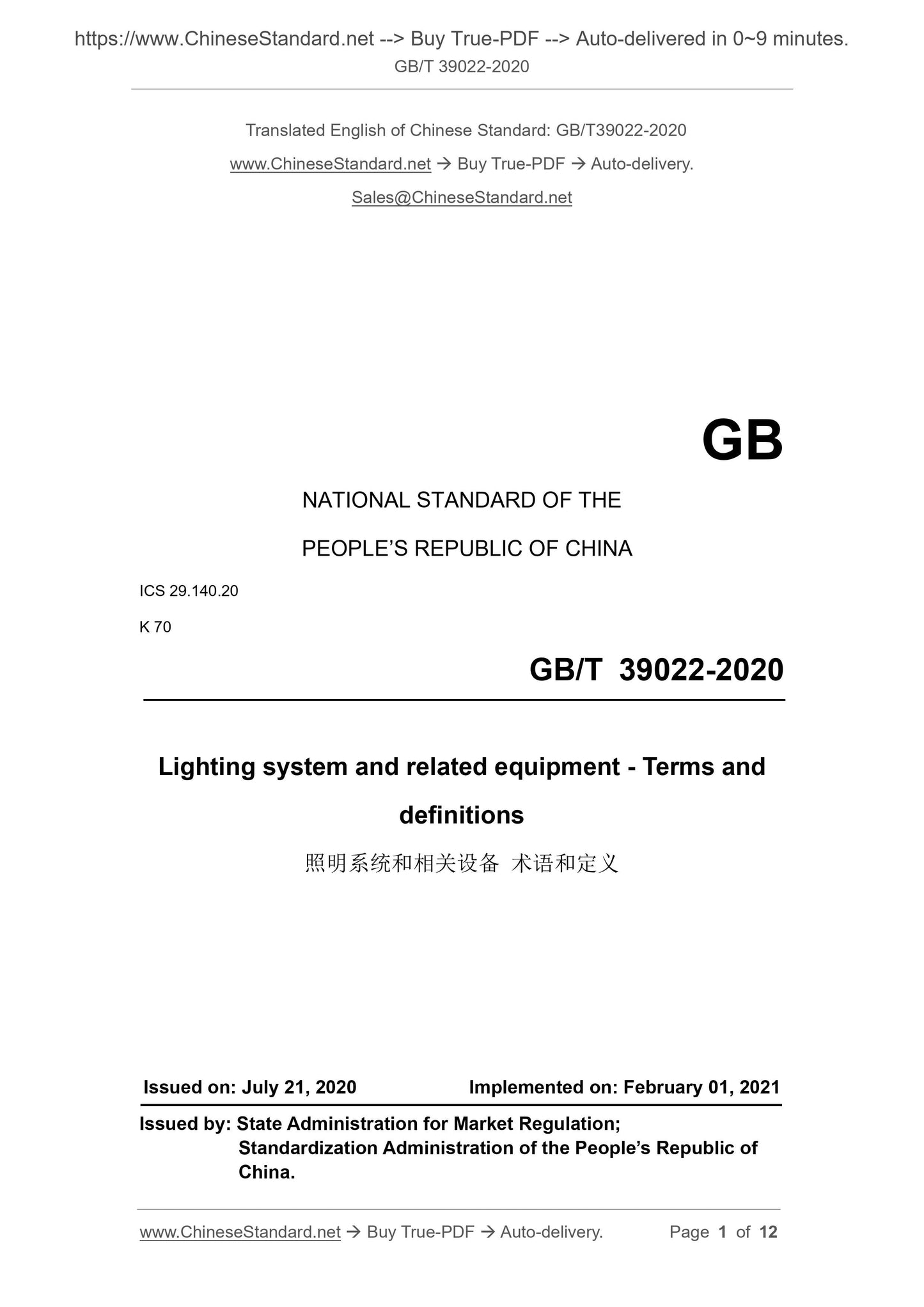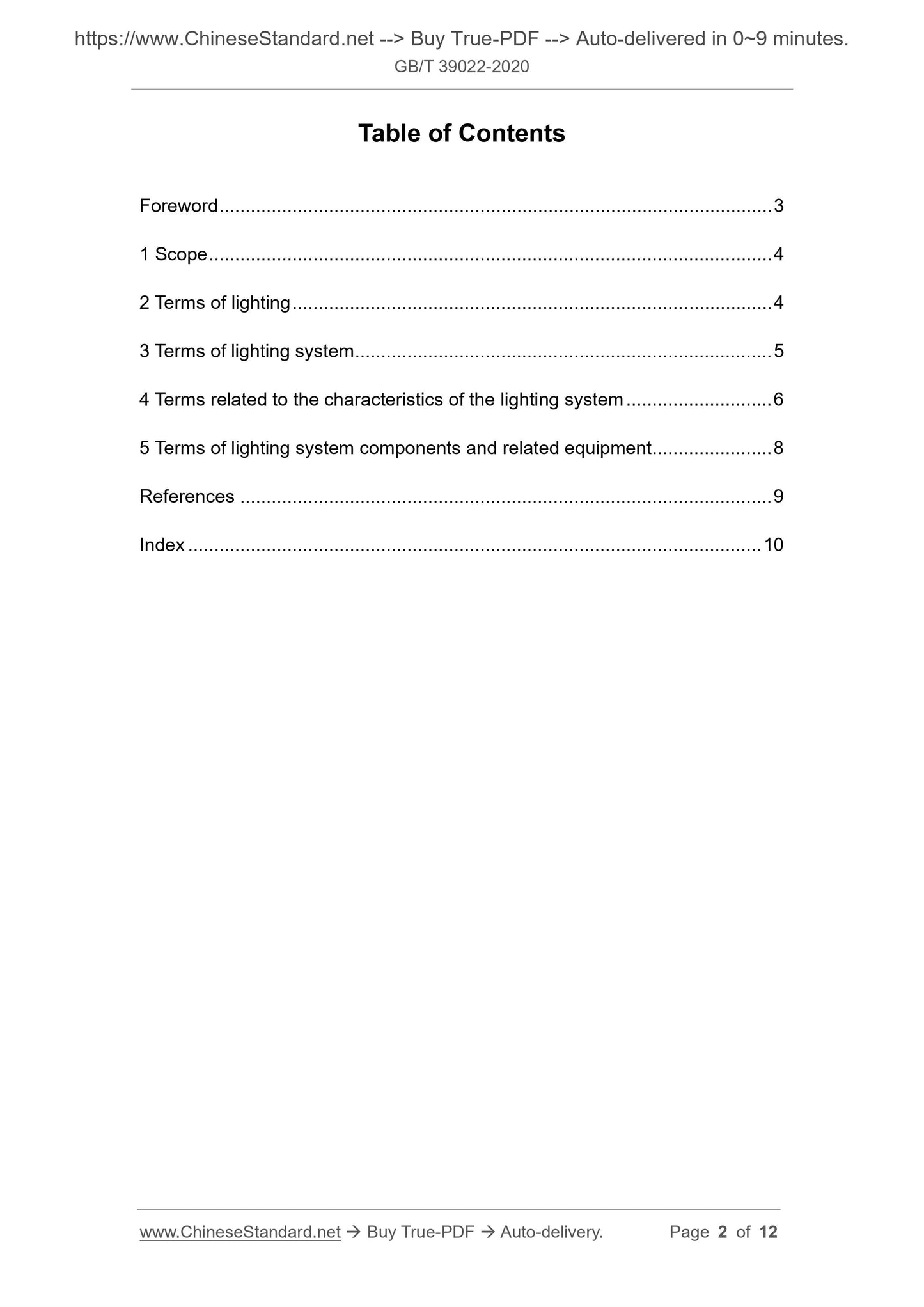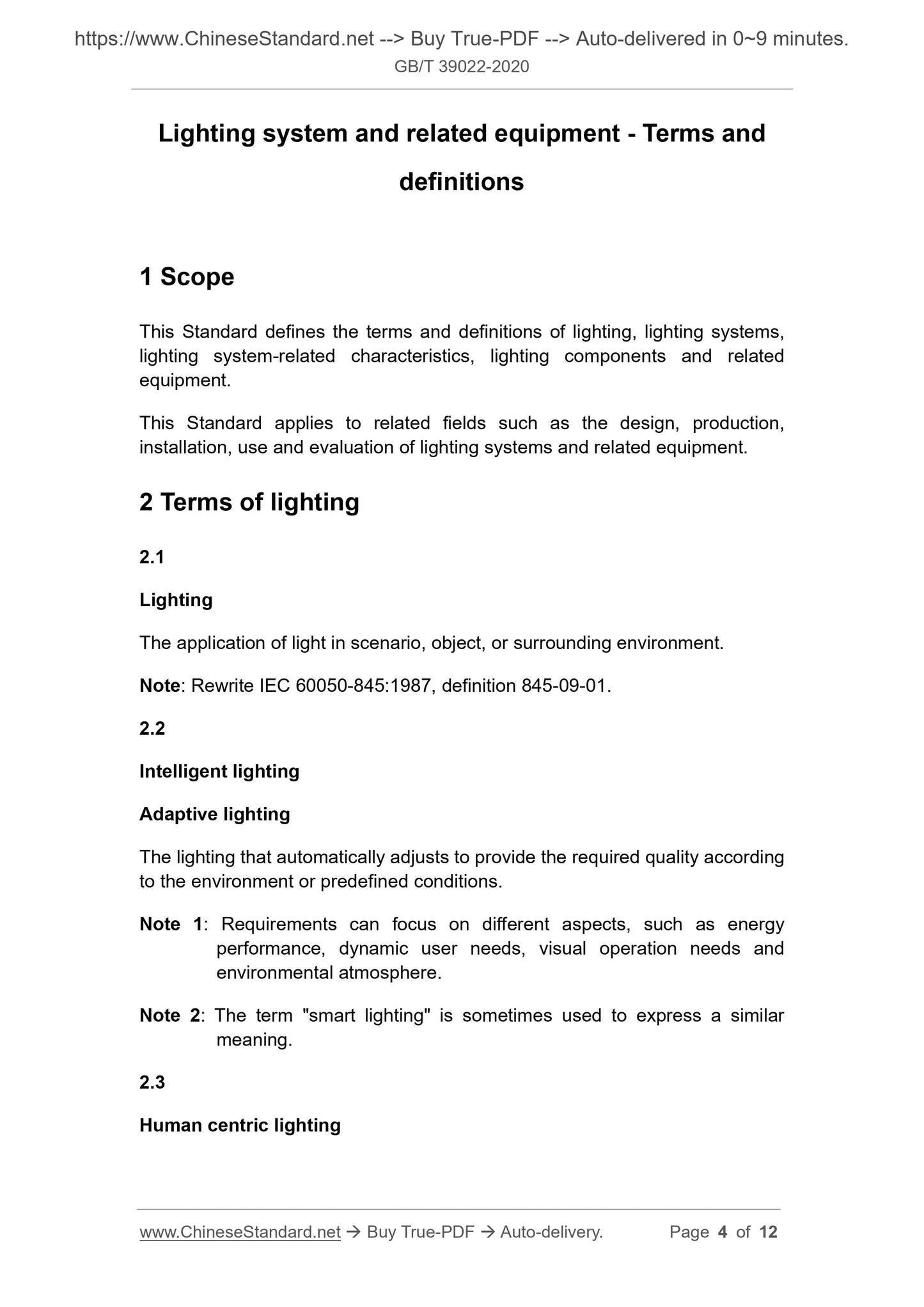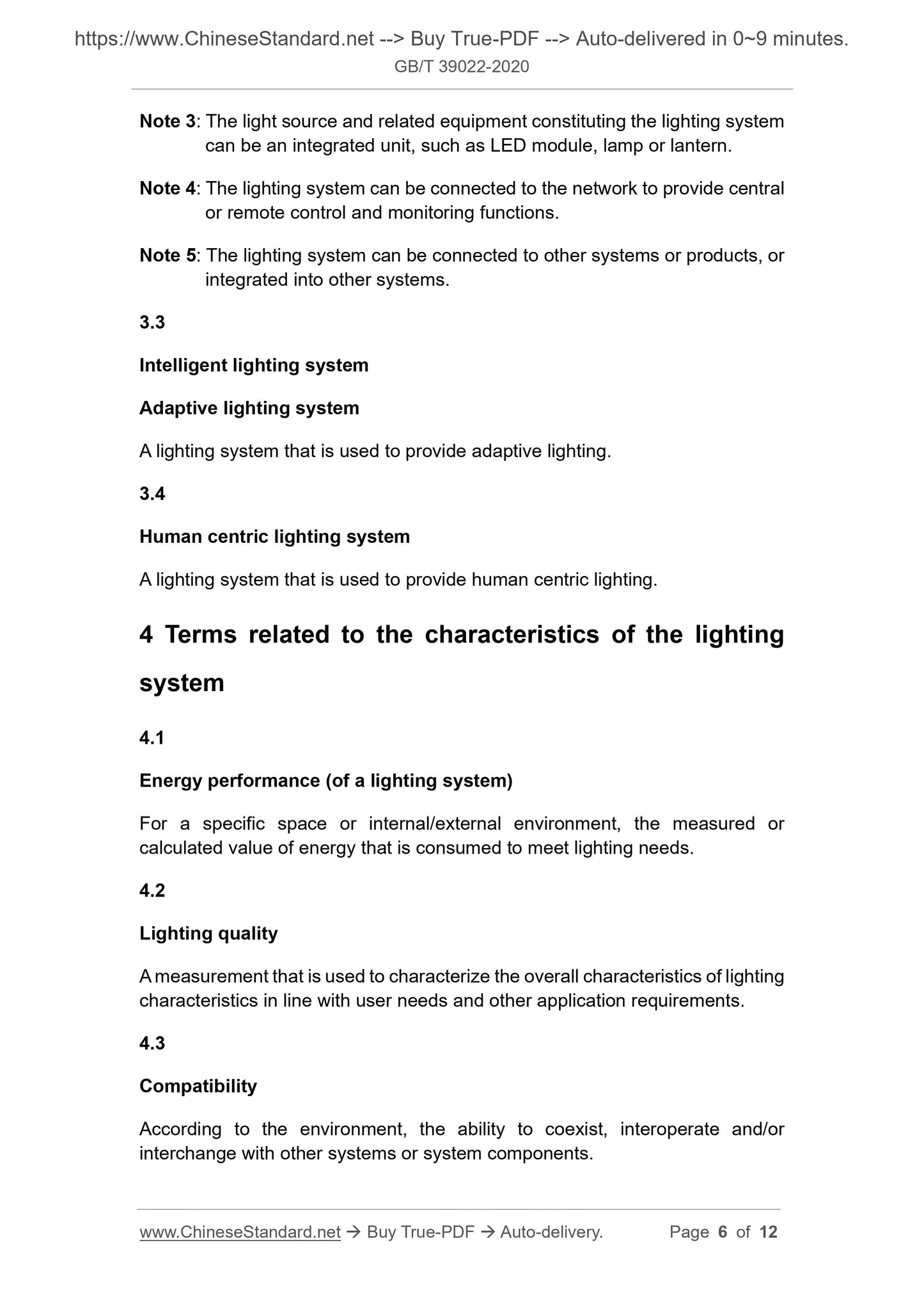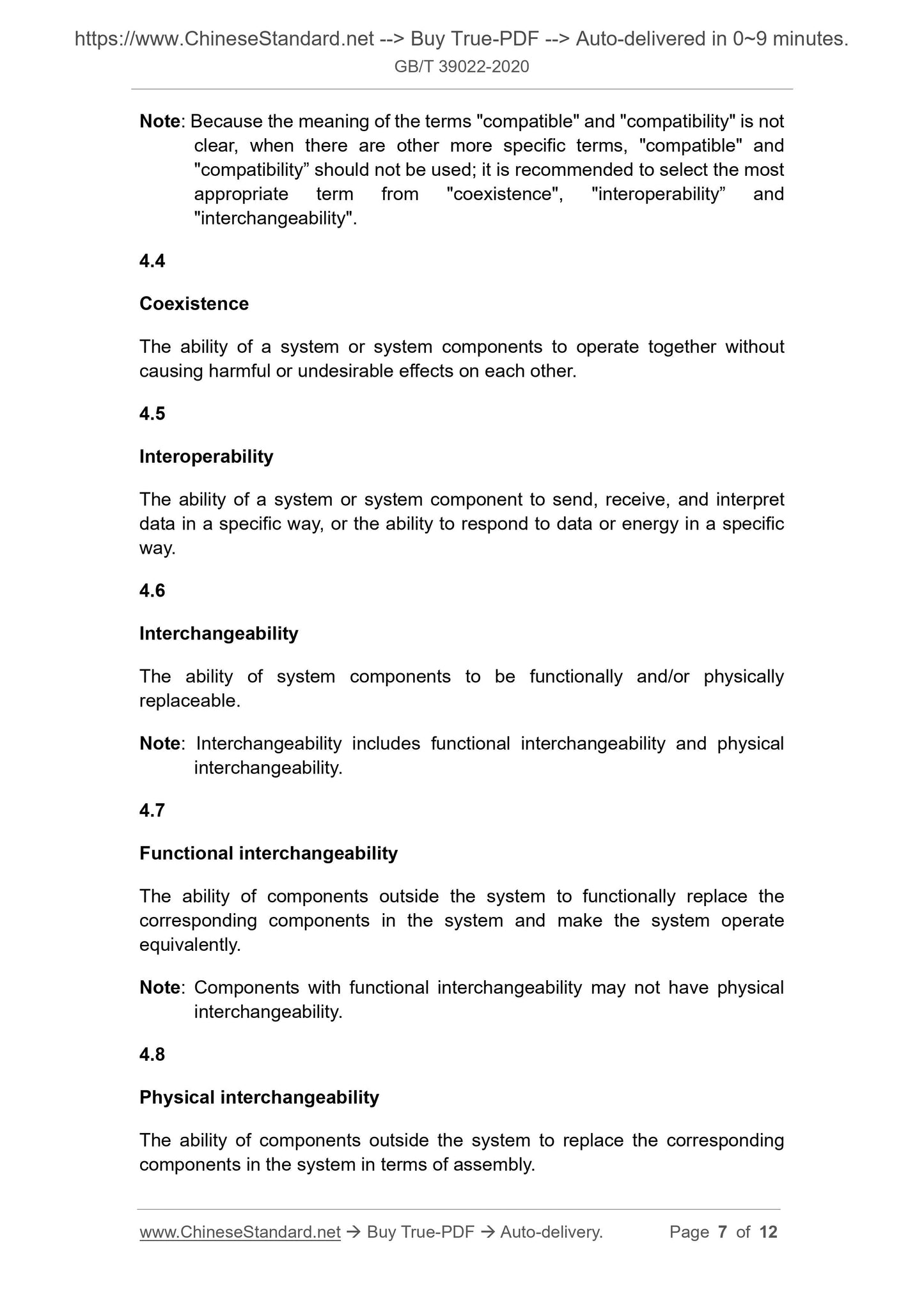1
/
of
5
www.ChineseStandard.us -- Field Test Asia Pte. Ltd.
GB/T 39022-2020 English PDF (GB/T39022-2020)
GB/T 39022-2020 English PDF (GB/T39022-2020)
Regular price
$155.00
Regular price
Sale price
$155.00
Unit price
/
per
Shipping calculated at checkout.
Couldn't load pickup availability
GB/T 39022-2020: Lighting system and related equipment - Terms and definitions
Delivery: 9 seconds. Download (and Email) true-PDF + Invoice.Get Quotation: Click GB/T 39022-2020 (Self-service in 1-minute)
Newer / historical versions: GB/T 39022-2020
Preview True-PDF
Scope
This Standard defines the terms and definitions of lighting, lighting systems,lighting system-related characteristics, lighting components and related
equipment.
This Standard applies to related fields such as the design, production,
installation, use and evaluation of lighting systems and related equipment.
Basic Data
| Standard ID | GB/T 39022-2020 (GB/T39022-2020) |
| Description (Translated English) | Lighting system and related equipment - Terms and definitions |
| Sector / Industry | National Standard (Recommended) |
| Classification of Chinese Standard | K70 |
| Classification of International Standard | 29.140.20 |
| Word Count Estimation | 10,159 |
| Date of Issue | 2020-07-21 |
| Date of Implementation | 2021-02-01 |
| Issuing agency(ies) | State Administration for Market Regulation, China National Standardization Administration |
Share
